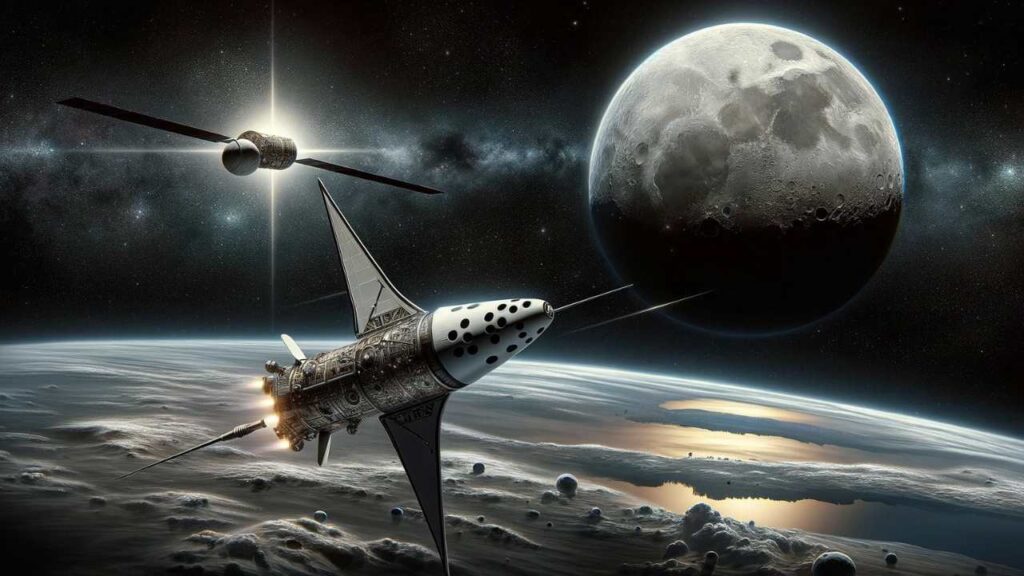“NASA, Artemis Mission, SpaceX, Starship, lunar exploration, space travel, test flight, space technology, aerospace engineering, sustainable exploration”
“NASA’s Artemis mission with an in-depth look at SpaceX’s Starship test flights, including the latest developments and challenges faced during the near-complete third flight. Understand the pivotal role of Starship in lunar exploration and what the future holds for space travel.”

Introduction to Artemis and Starship Collaboration
The NASA Artemis program, aimed at returning humans to the Moon and establishing a sustainable presence by the end of the decade, has taken a significant leap forward with the recent test flight of SpaceX’s Starship. This colossal spacecraft, designed to carry astronauts to the Moon, Mars, and beyond, represents a crucial element in NASA’s lunar exploration plans.

The Role of Starship in Artemis Missions
Starship, developed by SpaceX, has been selected by NASA to be the lunar lander for the Artemis missions. This selection underscores the vehicle’s innovative design and capabilities, which are expected to revolutionize space travel. Starship is designed to be fully reusable, capable of carrying up to 100 passengers, and can transport significant amounts of cargo to various celestial destinations, making it a cornerstone of NASA’s deep space exploration strategy.
Recent Developments in Starship Test Flights
In a recent test flight, the Starship vehicle demonstrated its capabilities, although it encountered some challenges. The test flight, which aimed to validate the spacecraft’s performance in a near-space environment, saw Starship ascend to a high altitude before maneuvering back to the landing site. Despite a successful launch and significant in-flight progress, SpaceX lost contact with Starship shortly before the test flight’s completion.
Challenges and Setbacks
The loss of communication with Starship during its third test flight has been a notable setback. This incident occurred during the critical phase of the flight, just as Starship was completing its pre-landing maneuvers. The specific cause of the loss of contact remains under investigation, but it highlights the inherent risks and complexities of testing such an advanced and unproven spacecraft.
Implications for Future Artemis Missions
Despite the challenges faced during the test flight, the progress with Starship is a positive sign for the Artemis program. Each test flight provides valuable data that SpaceX and NASA can use to refine the spacecraft’s design and operations, enhancing its safety and reliability for future crewed missions. The collaboration between NASA and SpaceX on the Starship program is pivotal, as it combines NASA’s experience in space exploration with SpaceX’s innovative approach to spacecraft design and launch operations.
Next Steps in the Artemis Journey
Looking ahead, the Artemis program aims to conduct a series of increasingly complex missions to establish a sustainable human presence on the Moon. This includes constructing the Lunar Gateway, a space station in lunar orbit that will serve as a hub for missions to the lunar surface and, eventually, to Mars. Starship’s role in these missions will be to transport astronauts from the Gateway to the Moon’s surface and back, showcasing its potential as a versatile vehicle for deep space exploration.
The progress of the Artemis mission, with the involvement of SpaceX’s Starship, marks the dawn of a new era in lunar exploration. Despite the setbacks encountered during the test flights, the ongoing collaboration between NASA and SpaceX promises to overcome these challenges, paving the way for a future where humans return to the Moon and set their sights on even more distant worlds. The journey of Artemis, powered by Starship, is not just about revisiting our nearest celestial neighbor but also about laying the groundwork for the next giant leap in human space exploration.
Collaboration and Competition in the Space Sector
The partnership between NASA and SpaceX exemplifies the growing trend of public-private collaborations in the space industry. This synergy is accelerating technological advancements and fostering a competitive environment that benefits the entire sector. Other companies and international agencies are also contributing to the Artemis program, creating a dynamic and multi-faceted effort towards lunar exploration.
Conclusion
The Artemis program’s progress, highlighted by SpaceX’s Starship test flights, is a testament to the resilience and innovation inherent in space exploration. While challenges like the recent communication loss are setbacks, they are also opportunities for learning and improvement. The journey to the Moon and beyond is fraught with uncertainties, but with each test flight and mission, humanity moves closer to becoming a multi-planetary species.
This article encapsulates the latest developments in the Artemis program and SpaceX’s Starship, emphasizing the significance of these milestones in the broader context of space exploration. The recent test flight and its challenges are critical components of the ongoing journey to extend human presence beyond Earth, serving as both a testament to human ingenuity and a reminder of the complexities of space travel.
- NASA Discovery of Aurora-Like Radio Emissions
- SpaceX-NASA Crew 8 Mission
- NASA Nova-C Mission Launched
- NASA Invites Applications for Simulated Mars Year-Long










